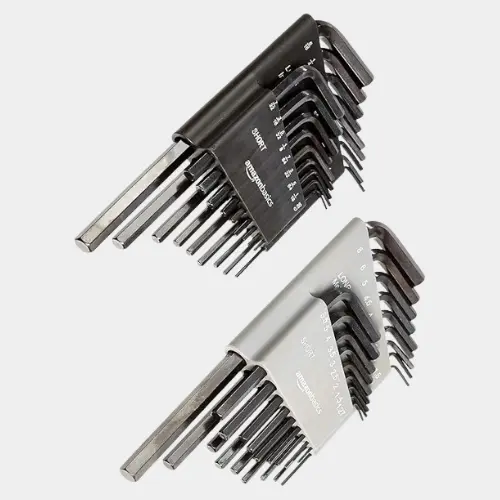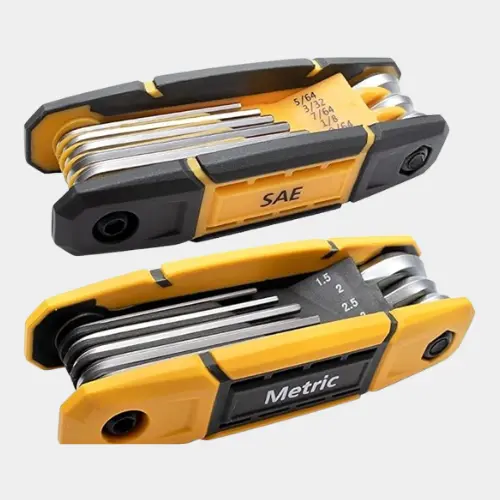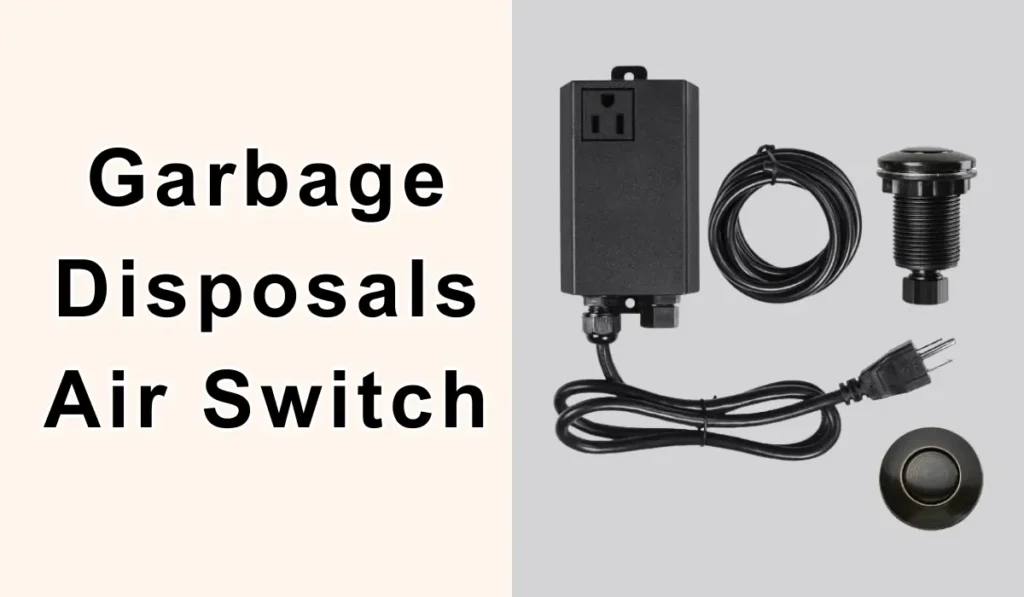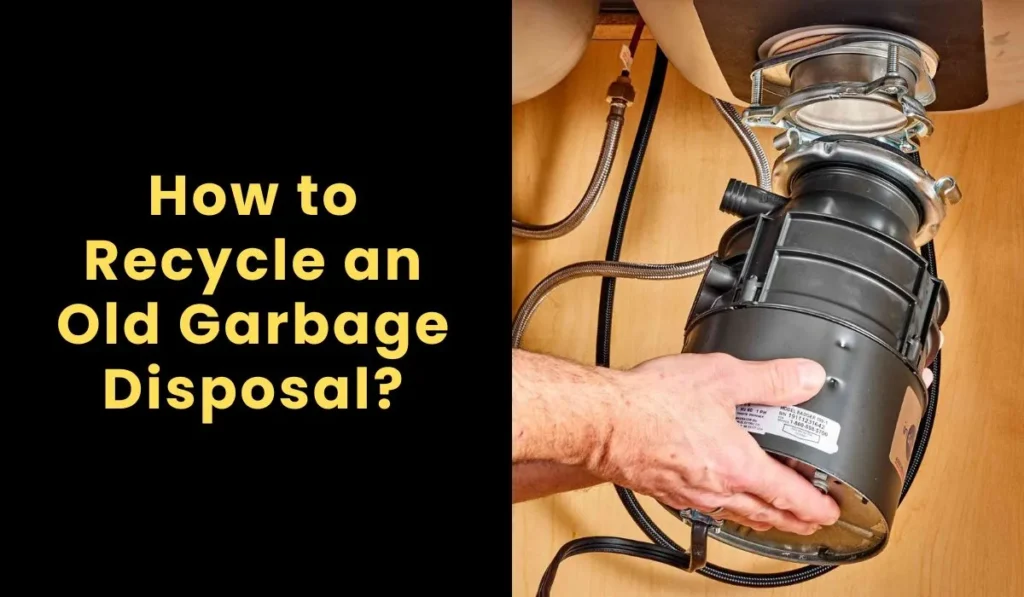What Is a Hex Key and How to Use It
Ever tried assembling furniture or a bike and found a mysterious small L-shaped tool in the box? You’ve likely discovered a hex key (also called an Allen key or hex wrench). It’s simply a short steel rod bent at a 90° angle, with a hexagonal (six-sided) cross-section that matches a bolt’s recessed hex socket. Hex keys are everywhere most flat-pack furniture, bicycles, and many machines come with a free Allen wrench for assembly. In this guide, we’ll explain what hex keys are, why they’re so useful, and how to use them correctly.
What Is a Hex Key?
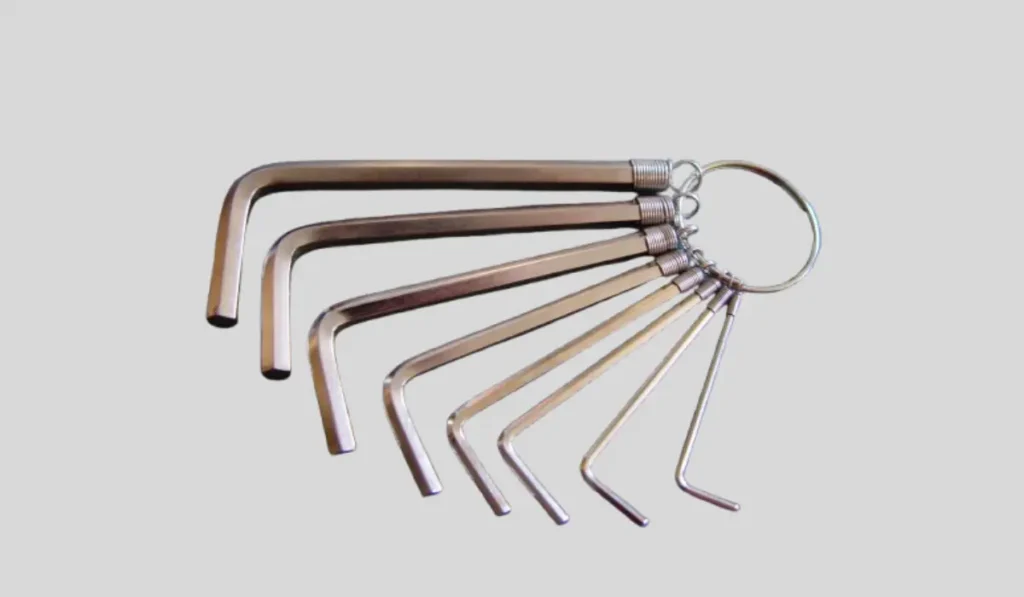
A hex key is basically an L-shaped steel tool for driving screws or bolts that have a six-sided (hexagonal) socket head. You’ll hear several names for the same tool: Allen key, Allen wrench, hex key, hex wrench and even Unbrako or Inbus in some places. The term “Allen” comes from the Allen Manufacturing Company (a Connecticut company that patented the design around 1910). Technically “Allen” is a registered trademark from that era, but over time it’s become a generic term – much like “Xerox” for photocopy or “Hoover” for vacuum cleaner. In casual use, most people treat hex key and Allen key as the same thing.
hex key Design & Structure
A typical hex key has two arms of unequal length – one short and one long – formed by bending a hexagonal steel rod 90°. Both ends have the same size hex profile, so either end can fit into the matching screw head. In use, the longer arm acts as the handle to create more torque, while the shorter arm can reach into tighter spaces or allow faster turning once the screw is loose. In practice you often insert the short end into the screw and use the long arm to twist it, giving plenty of leverage.
Material & Manufacturing
Hex keys are made of metal, typically a tough alloy steel (often chromium–vanadium or similarly hardened steel) for strength and durability. Manufacturing usually involves taking steel wire or rod, forming it with a hexagonal cross section, and then bending it and cutting it to the right length. The result is a rigid one piece tool. Chrome-plated or black-oxide finishes are common to resist corrosion, especially on higher-quality sets.
Sizes & Standards
Hex keys come in many sizes to match the variety of hex screws. They’re almost always measured “across flats” that is, the distance between two opposite sides of the hex head.
There are two main size systems:
- Metric (millimeters, common in most countries)
- Imperial/SAE (inches, used mostly in the U.S.)
Manufacturers sell hex keys individually or in sets with a range of sizes. In fact, hex keys are usually sold in kits containing multiple keys so you can pick the right one. Many affordable sets include a basic array of sizes, and you’ll also find fold up or pocket multi key tools that pack several sizes into one handle.
If you’re planning to grab a reliable set of hex keys for your toolkit, here are two solid options that balance quality and price:
1. Amazon Basics Hex Key Set (Metric & SAE, 36-Piece Set with Storage Case)
This set is perfect for home or garage use. It comes with both metric and imperial sizes, neatly organized in a compact case. The chrome-vanadium steel build gives great strength and rust resistance, while the long-arm design helps with leverage and control. It’s ideal for furniture assembly, bike repairs, or any quick mechanical job.
2. MulWark 17 pcs Folding Hex Key Set (Metric & Standard, Compact Design)
If you like a more portable option, this 17 pcs folding-style set is super convenient. It includes all the common sizes in both metric and SAE formats and folds into an easy-grip handle. The folding design means no lost keys and no bulky storage boxes perfect for cyclists, on the go repair kits, or small home projects.
Why Use a Hex Key? (Advantages & Context)
Advantages Over Other Tools
Hex keys have several perks compared to other drivers (like screwdrivers or regular wrenches). They are extremely simple and compact, basically just a bent piece of metal which makes them cheap to produce and easy to carry. The six-sided interface is a big advantage: it provides six contact surfaces with the screw, which improves torque and reduces the chance of slipping or camming out (unlike a flathead or even a Phillips screw).
A hex key can fit fully inside a recessed bolt head so that it’s firmly gripped on all sides, making loose screws less likely during turning. Also, because they’re lightweight and come in different lengths, hex keys can reach into tighter spots than bulkier tools. All these factors: simplicity, reliability, and low cost make hex keys a user friendly fastening solution.
Common Applications
Common Applications
Hex keys are used everywhere, from homes and workshops to heavy industries.
- Furniture assembly: The go-to tool for building flat-pack furniture like chairs, tables, and bed frames.
- Bicycles: Used to adjust brakes, seat posts, and other parts.
- Automotive work: Essential for tightening brake calipers, engine parts, and small machine fittings.
- Electronics and appliances: Great for assembling devices that use hex-socket screws for a clean, flush finish.
- Industrial machinery: Used in factories for maintenance and assembly lines.
If something has a hex socket, you can bet a hex key is the right tool for it.
How to Use a Hex Key Correctly
Step-by-Step Guide
To use a hex key efficiently and keep both the tool and screws in good shape, follow these simple steps:
1. Pick the correct size
Always choose a hex key that fits tightly into the screw socket — no wobble at all. If it feels loose, it’s too small and can easily slip or round off the inner corners of the screw.
2. Insert it fully and line it up
Push the key all the way into the socket until it sits flush. Make sure all six faces of the key are fully engaged before you apply any pressure. This solid contact prevents wear and slipping.
3. Hold it straight at 90°
Keep the key perfectly perpendicular to the fastener. Tilting it even slightly can make it pop out or damage the socket edges. A clean, straight angle gives you the best grip and control.
4. Turn it in the right direction
Tighten by turning clockwise (righty-tighty) and loosen by turning counterclockwise (lefty-loosey). Apply firm, steady pressure — not jerky movements.
5. Use leverage smartly
The long arm of the key provides more torque, which is great for tight bolts. The short arm, on the other hand, helps when you’re in narrow spaces or need to spin a screw quickly after it’s loosened.
6. Stop once it’s snug.
Once the fastener feels secure, stop turning. Over-tightening can strip threads or damage the bolt — snug is strong enough.
Special Tips & Best Practices
- For tamper proof screws: Some fasteners have a small pin in the middle. These need a security hex key — one with a tiny hole at the tip to fit over the pin.
- Protect yourself: When dealing with stubborn, rusty, or corroded bolts, wear gloves and safety glasses. A sudden slip can easily cut your hand or send metal flakes flying.
- Loosen stuck screws with oil: A few drops of penetrating oil or WD-40 can help free jammed bolts. Let it soak for a minute or two before retrying.
- Upgrade your grip: For frequent use, a T-handle hex wrench offers better comfort and leverage. It lets you apply more torque without straining your wrist, though it’s bulkier than a regular key.
- Try a ball-end hex key: Ball-end versions allow you to turn screws at a slight angle — perfect when something’s blocking a straight path. Just remember, angled use gives you less torque, so don’t overtighten.
Common Mistakes & How to Avoid Them
- Wrong size, wrong results: Using a smaller key than needed is the fastest way to strip a screw. Always double-check the fit.
- Not seated fully: Half-inserted keys slip out easily. Push the key in completely before turning.
- Turning off-angle: Keep the key straight. Even a slight tilt reduces grip and increases wear.
- Too much force: Hex keys are strong but not indestructible. If a bolt refuses to move, use a longer key or some lubricant — don’t force it.
- Improvised tools: Avoid using screwdrivers, drill bits, or similar shapes as substitutes. They rarely fit properly and can permanently damage the fastener.
Safety & Maintenance Tips
- Check before you start: Make sure both the hex key and screw head are clean and undamaged. If the socket is rusty or stripped, replacing the screw might be your only option.
- Use protective gear: Old bolts and rusted surfaces can break suddenly — gloves and goggles keep you safe.
- Go easy on torque: Tighten until it’s firm, not until it squeaks. Over-tightening can ruin threads or snap the bolt.
- Keep your tools clean and dry: After each use, wipe your hex keys and store them in a dry box to prevent rust.
- Skip unsafe hacks: Never extend the handle with pipes or hit it with a hammer. If you need more power, use a longer or T-handle key made for that purpose.
Conclusion
In short, the hex key, also known as an Allen wrench, may look simple, but it’s one of the most dependable tools you can own. That small L-shaped piece of metal with its six flat sides can handle a surprising variety of jobs from tightening a loose chair leg to adjusting bike parts or assembling heavy machinery.
Its genius lies in its simplicity: no moving parts, no complex design, just solid grip and leverage in a compact form. When you use the correct size, insert it all the way in, keep it straight at a right angle, and turn with steady pressure, you’ll get a secure, clean result every time.
Whether you’re working on furniture, bicycles, or automotive repairs, having a good set of hex keys saves time and frustration. And if you use special versions like ball-end, T-handle, or security hex keys, you’ll make tougher tasks even easier.
The Author

I’m Muhammad Nabeel Dar, an employee in waste management and the owner of Garbage Waste Disposal with more than four years of experience helping people to control waste and garbage disposals are the best tools to control it. Read more


